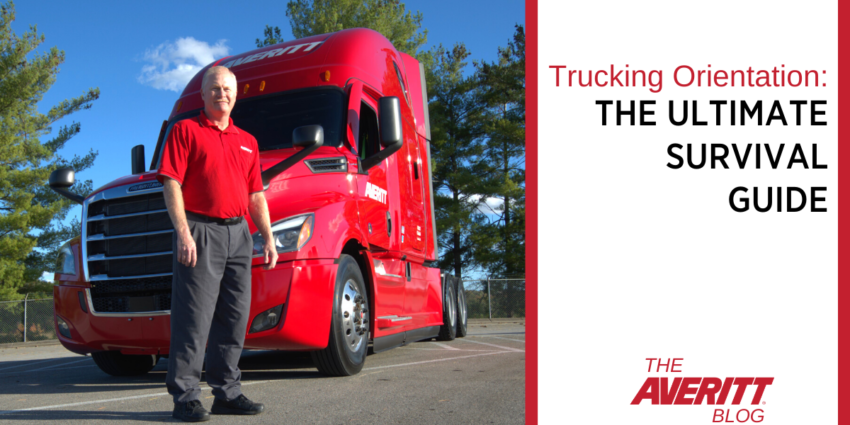
THE ULTIMATE SURVIVAL GUIDE TO TRUCKING ORIENTATION
Post Date - Nov 18, 2019
Let’s face it - trucking orientation generally has a bad reputation and while it may be accurate for some orientations, not all programs are created equal. Here, we’ll walk you through what to expect at trucking orientation, questions you’ll want to ask and a look at the Averitt difference.
Length and content of orientation - Truck driving orientation programs typically range from two to four days. The length of orientation often depends on whether additional safety training is required. For instance, if your new driving job requires handling Hazmat materials or loading and unloading of freight, your company may require additional training during your orientation. It’s important to ask how long your orientation will be so that you know what to expect.
The Averitt Difference: Our orientation is held at our corporate campus in Cookeville Tenn. and can be three to four days depending on position.
In-person vs. online training - With the accessibility and convenience of the internet, many companies are moving portions of their orientation online. There are some that even do the entire orientation in an online setting. If an online orientation interests you, make sure you inquire about this option when looking at different companies.
The Averitt Difference: We feel it is extremely important to meet with our new drivers – and for them to meet us! You’ll meet your recruiter, as well as various representatives from other departments, including our president and CEO, Gary Sasser!
Travel - Orientation programs generally take place at a company’s headquarters or in one of its terminal locations. Traveling by bus is the most common way to travel to truck driver orientations, but air travel may be provided if you’re a certain distance away from the class location. Make sure to ask what travel, if any, is provided by the company as this can set the tone for your entire orientation experience.
The Averitt Difference: We pay and/or provide transportation to and from orientation. When you’re ready to schedule orientation, you’ll discuss travel in detail with your recruiter so we can accommodate the best option for you (i.e. airplane, bus, rental car or mileage reimbursement for driving your personal vehicle).
Accommodations - Hotel accommodations will vary from program to program. Some trucking orientation programs may use dormitory rooms instead of hotels.
The Averitt Difference: Our drivers stay at reputable lodgings in Cookeville, Tenn. We accommodate drivers in a comfortable hotel offering a variety of amenities and friendly service to make sure they’re comfortable for the duration of their stay.
Meals - Food is another thing to keep in mind during your trucking orientation. Some companies will provide catered meals while others will provide basic sandwiches. You might also find that some orientations cover all meals during the program, while others only provide one meal a day. Ask about what you should expect for meals ahead of time, especially if you have dietary restrictions that need extra accommodation or planning.
The Averitt Difference: The hotel includes a full hot breakfast before drivers are taken to the training center. Lunches are provided during training time. Boxed dinner meals or restaurant vouchers are provided for dinner.
Pay - Paid orientation allows you to earn a paycheck while you’re attending driver orientation. Not every company offers paid orientation to drivers, so it’s important to know this information before you begin.
The Averitt Difference: Averitt’s orientation is paid! Be sure to ask your recruiter what your pay will be as different positions are paid different rates.
What to bring - Being as prepared as possible is key to starting your driving career off on the right foot. You’ll be expected to bring basic classroom supplies for note-taking and personal documentation. Make sure you know exactly what you need to bring so that your start date doesn’t get delayed.
Averitt requires originals (not copies) of the following:
- Two forms of identification
- A voided check or something from your bank w/account number to set up direct deposit.
- Page 1 of the 1040 from the previous year’s federal income tax return.
- Marriage certificate (if married in the current year).
- Social security numbers and dates of birth of any dependents for insurance.
- Birth certificate for children not claimed on taxes for insurance.
What other questions do you have about trucking orientation? Is there anything else you’d like to know before you begin? Be sure to connect with us so we can help make your transition as smooth as possible.